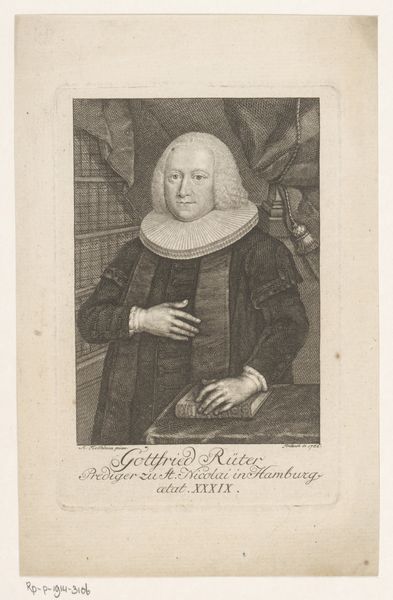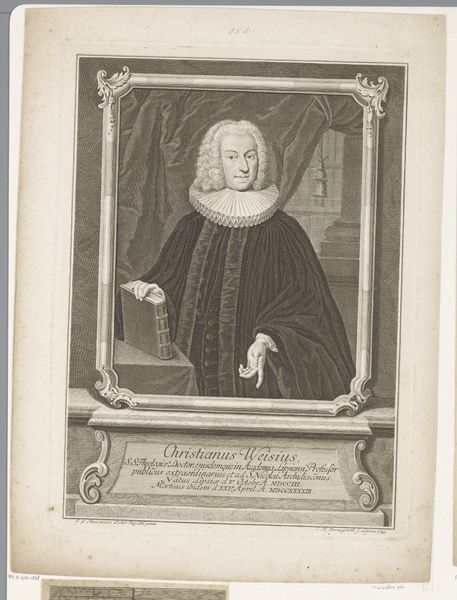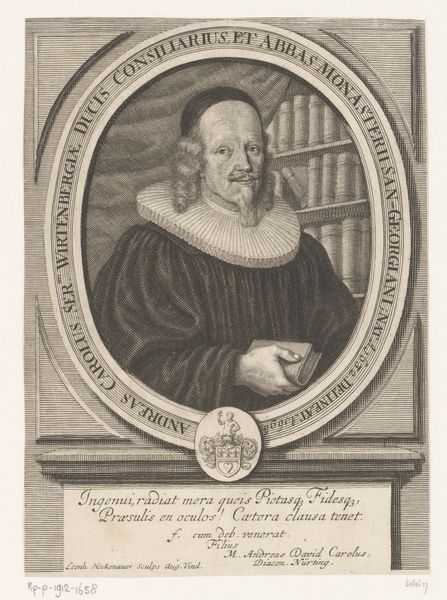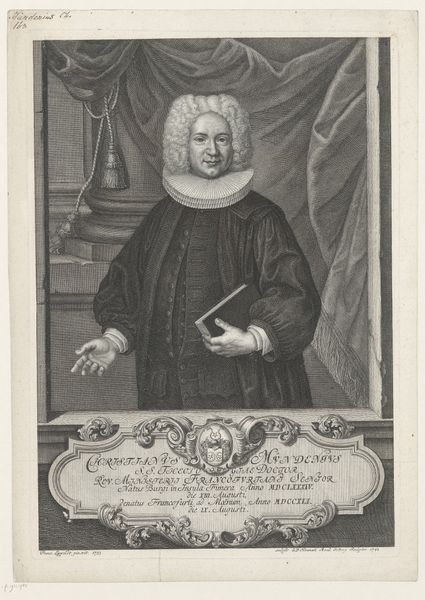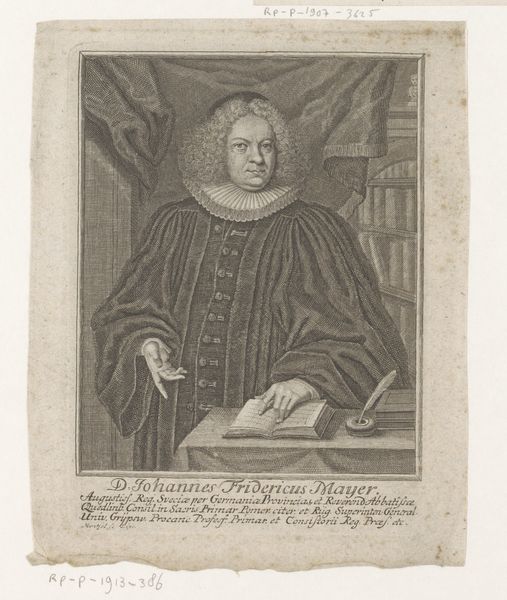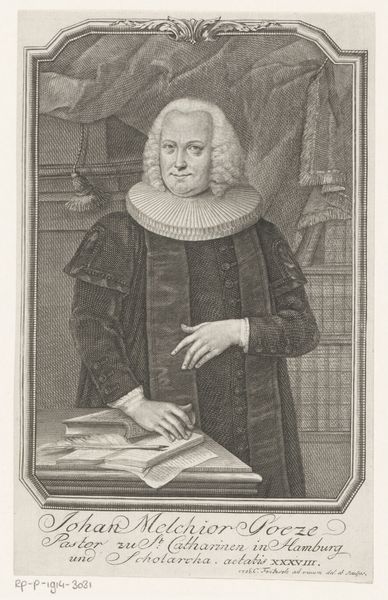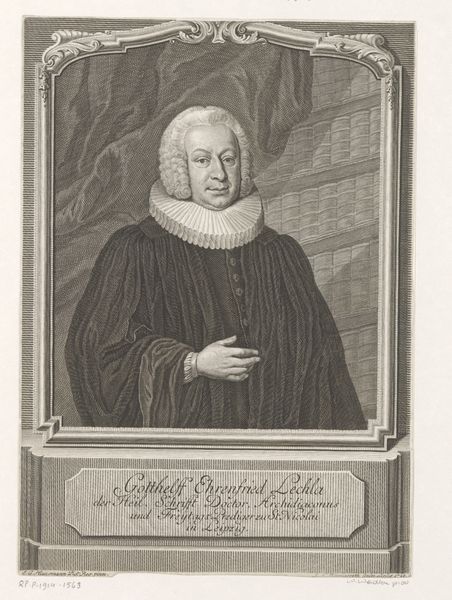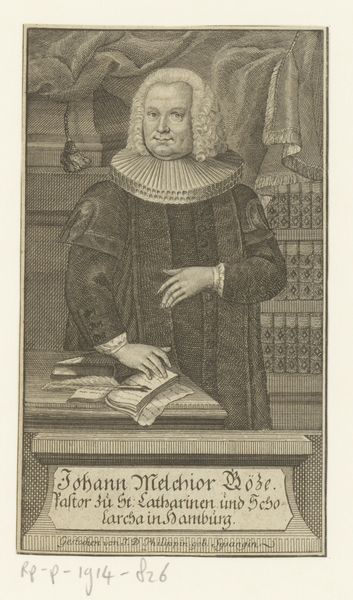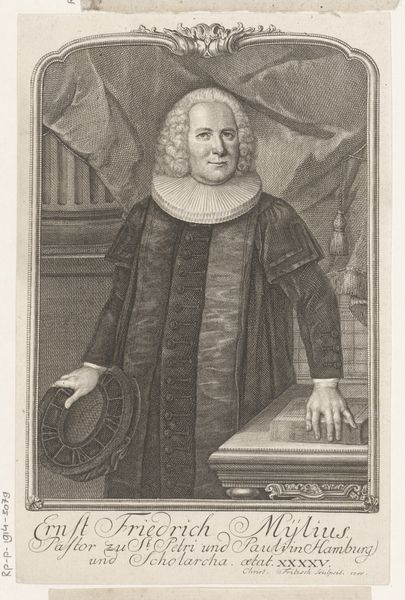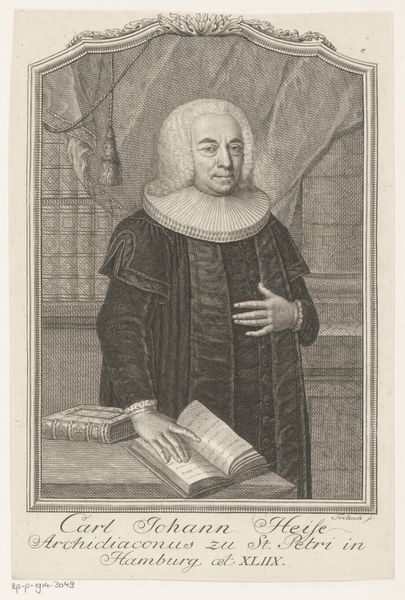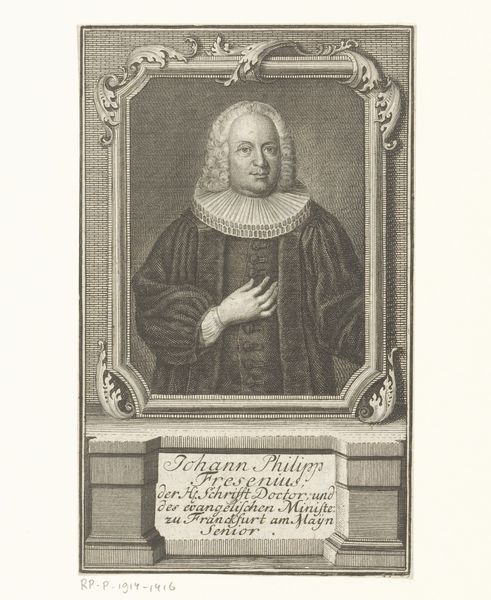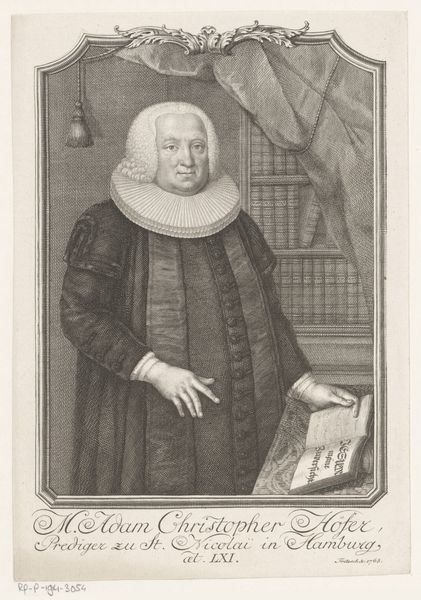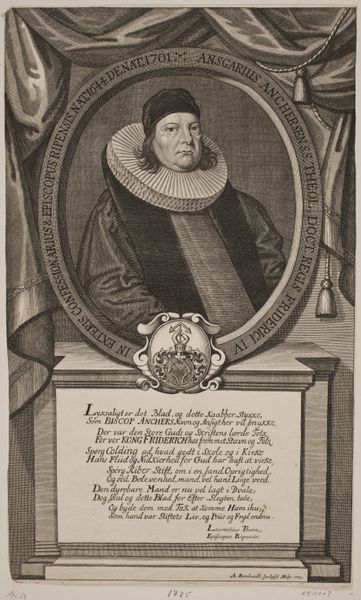
Dimensions: height 144 mm, width 96 mm
Copyright: Rijks Museum: Open Domain
Curator: This is a fascinating piece from 1767; it’s Christian Fritzsch’s portrait of Georg Ludwig Herrnschmid. It’s currently held here at the Rijksmuseum, made with engraving on paper. Editor: My first impression is one of severe elegance. The stark contrast between the figure and the background, combined with the subject’s direct gaze, immediately commands attention. The circular ruff around his neck is striking, almost halo-like. Curator: Indeed, that ruff speaks volumes! It's not just a fashion statement. During that era, clerical dress was symbolic of status and moral authority, specifically a direct connection to Reformation symbolism. Herrnschmid was, in fact, a pastor and scholar in Hamburg. The setting, too, reinforces this—note the heavy, draped curtain and bookshelves crammed behind him, indicating a life dedicated to learning. Editor: Yes, the staging is deliberate, creating depth and enclosure despite being a print. I’m struck by how Fritzsch employs the linear qualities of engraving to suggest texture, especially in the rendering of fabric and skin. It's an intellectual, even spiritual space crafted within the frame. And consider the hand gestures: one resting firmly on an open book and the other placed assuredly on the chest. What is your reading? Curator: I interpret it as embodying intellectual integrity. The books are evidence of learnedness, while the hand over the heart is the moral compass—or a commitment to scripture—linking thought to genuine care. It speaks to something very elemental, you see. Editor: You’re right. The book, pen and inkwell placed prominently further this reading of scholarly dedication. They structure this plane with visual texture. The varying densities of marks direct the gaze continually upward, reaffirming this visual and intellectual ascendance. Curator: This isn't merely an image of a man, but rather an invocation of ideals tied to scholarship and religious leadership, even something resembling a divine ordainment within cultural memory. It allows him to speak over time through image and symbol, isn’t it interesting? Editor: It truly is. Looking closely has really revealed its complex balance between representation and idealization. Curator: Precisely; it makes the portrait far more profound than it might seem at first glance. Editor: Thank you; my eye now goes to things it wouldn’t have on first pass.
Comments
No comments
Be the first to comment and join the conversation on the ultimate creative platform.
